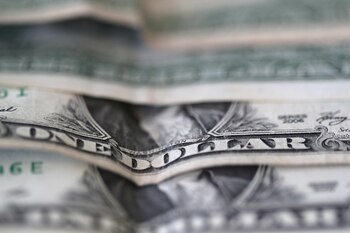
The free dollar is traded this Thursday at $203 for sale, with a gain of one peso on the day. The informal currency was traded on a $199 floor last Tuesday.
The wholesale dollar is traded higher by eleven cents, to $109.52, with an exchange rate gap of 85.4% compared to the informal dollar.
A highlight of the session was the return of the Central Bank to selling positions to balance a market that remained weak in supply, a trend that was perceived since the Government closed exports of soybean oil and flour, just at the time of the highest sales of these products due to the coarse harvest.
With a small amount traded in the spot segment of about USD 212.2 million, the Central Bank ended its intervention with a sales balance of about USD 33 million, according to private estimates.
“The cumulative amount of purchases for the month now falls to just over $520 million,” estimated Gustavo Quintana, operator of PR Corredores de Cambio.
“Financial dollars were higher on Wednesday for the second round in a row, after recording an eight-wheel bearish streak,” said Research for Traders.
International reserves grew by USD 34 million on Wednesday and ended up at $37.064 million.
The Central Bank could raise the benchmark rate at today's monetary policy meeting, after the high retail inflation figure that grew in February 4.7% with a sharp rise in food and beverages of 7.5 percent. This is 42.5% nominal per year, which implies an effective annual rate of 51.93 per cent.
So far this year, the main monetary institution implemented rate hikes of 450 basis points. The last one was in mid-February, and reached 250 points, after the January inflation figure. The market estimates that an additional 200 basis points should be moved to avoid moving away from the demand for positive real rates imposed by the agreement with the IMF.
The Ministry of Economy issued public securities on Thursday for a cash of $381,115 million ($362,844 million in nominal value awarded), through the bidding of bills and bonds in pesos.
“With this amount, plus the amount obtained last week in an early exchange, the Government finished covering the maturity of the TX22, which, with a stock of $547,440 million, represented the highest maturity of the first half of the year. In this way, the Treasury raised an extra funding of $123.8 billion that will allow it to cover part of the fiscal deficit,” they estimated from Research for Traders.
The Financial Conditions Index (ICF) jointly developed by IAEF (Argentine Institute of Finance Executives) and Econviews suffered significantly from the global turbulence unleashed by the armed conflict in Ukraine.
In February, the index lost 16.1 points, the worst drop since April 2020 when the pandemic broke out. The ICF went from -53.8 to -69.9. The global component worsened more than the local subscript with a decline of 11.7 points while the Argentine component fell 4.3 points, the study indicated.
The subscript of local conditions stood at -89.8 points. Although the fall in February was not serious, this subscript was worth -55.2 last June, which means that it plummeted 34 points in eight months. Anyway, the local ICF is doing better than in December 2020.
“The index of local financial conditions has been operating in an area of financial stress for 41 months. The last time the local ICF was on positive ground was in August 2018. Anyway, the situation is orders of magnitude better than when the pandemic began,” the IAEF and Econviews explained.
KEEP READING:
Últimas Noticias
Debanhi Escobar: they secured the motel where she was found lifeless in a cistern

The oldest person in the world died at the age of 119

Macabre find in CDMX: they left a body bagged and tied in a taxi
The eagles of America will face Manchester City in a duel of legends. Here are the details

Why is it good to bring dogs out to know the world when they are puppies




